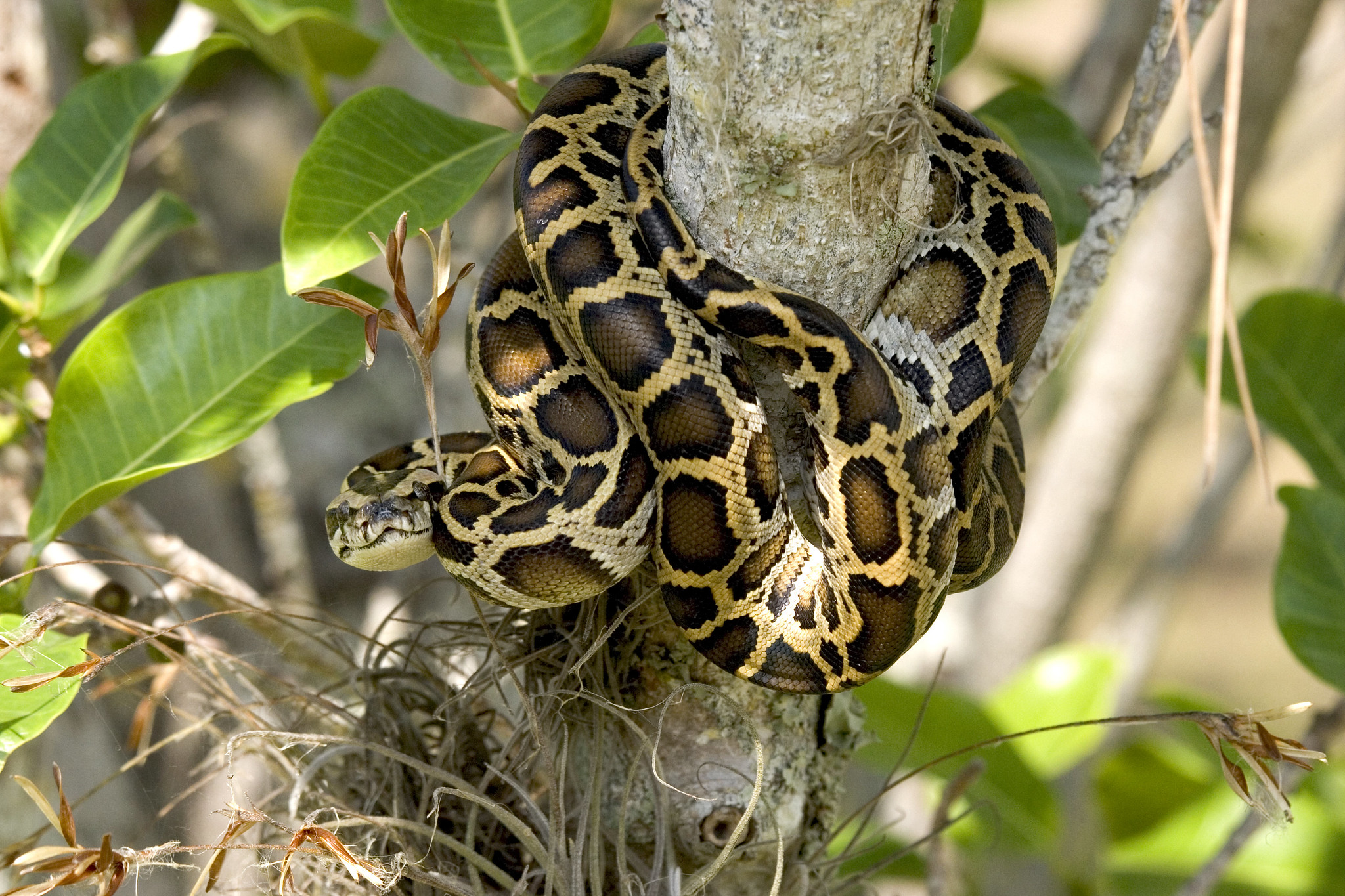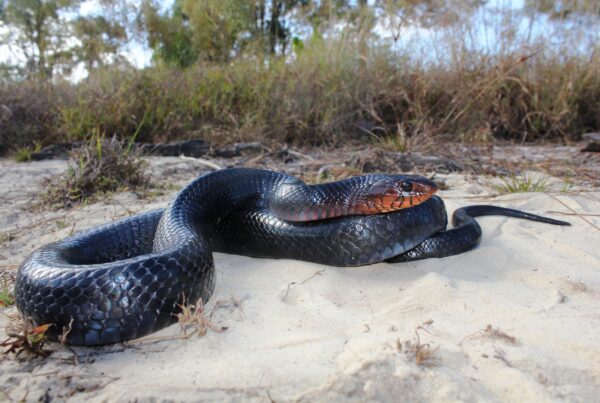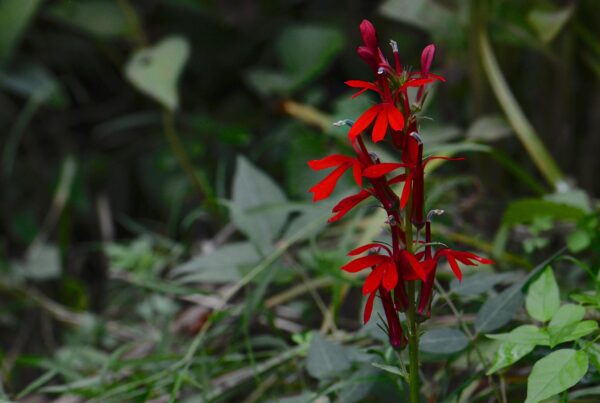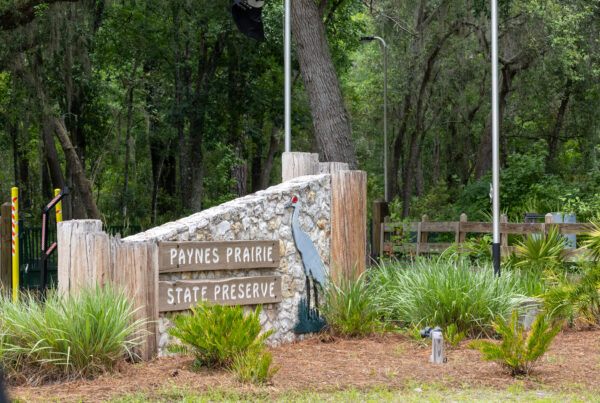Florida’s unique ecosystems are home to an incredible diversity of native plants and animals, but they are also under constant threat from invasive species. These non-native animals, introduced through human activity, often lack natural predators and spread while disrupting fragile ecosystems. Florida is battling numerous invasives, but five species stand out as the most problematic due to their environmental and economic impacts.
Burmese Python
Few invasive species have made headlines like the Burmese python (Python bivittatus). Originally introduced through the exotic pet trade, these massive snakes have established a stronghold in the Everglades, where they have decimated native wildlife populations. Studies show that raccoons, opossums, and bobcats have declined by over 90% in areas with high python populations. Without natural predators to keep their numbers in check, these apex predators continue to threaten Florida’s native species.

Burmese Python. Photo by Rodney Cammauf | NPS photo
Impact: Severe declines in small and medium-sized native mammals and birds.
Control Efforts: The Florida Fish and Wildlife Conservation Commission (FWC) encourages removal and hosts annual python challenges to reduce their numbers.
Feral Hog
Florida’s feral hogs (Sus scrofa) are another major ecological problem. These highly destructive animals root through the soil, damaging crops, wetlands, and native habitats. They compete with native wildlife for food, degrade water quality, and can carry diseases that threaten livestock and other animals. First introduced by Spanish explorers in the 1500s, their populations have exploded, causing widespread destruction across the state.

Feral Hog. Photo by Pixabay
Impact: Habitat destruction, water pollution, and disease transmission.
Control Efforts: Hunting and trapping programs help manage populations, but their high reproduction rate has made eradication difficult.
Green Iguana
A common sight in South Florida, the green iguana (Iguana iguana) is a growing nuisance. These large, herbivorous lizards damage gardens, devour native plants, and undermine infrastructure by digging burrows under sidewalks, seawalls, and roads. Their populations have surged due to Florida’s warm climate, and without natural predators, they continue to spread.

Green Iguana. Photo by Getty Images
Impact: Damage to native vegetation and urban infrastructure.
Control Efforts: Homeowners are encouraged to remove iguanas from their properties, and professional removal efforts are increasing.
Argentine Tegu
The Argentine black and white tegu (Salvator merianae) is one of Florida’s most concerning invasive reptiles. These large lizards are voracious predators that eat bird eggs, small mammals, insects, and even native reptiles.
They are particularly dangerous to ground-nesting species like gopher tortoises and burrowing owls. Highly adaptable, tegus can survive in a range of environments, including areas as far north as Central Florida.

Argentine Tegu. Photo by Robin Gwen Agarwal
Impact: Predation on native species, competition with native reptiles.
Control Efforts: FWC encourages the public to report sightings, and removal efforts are ongoing.
Rhesus Macaque
One of the more unusual invasive species in Florida is the Rhesus macaque (Macaca mulatta), a non-native monkey species that has established populations around Silver Springs State Park. These monkeys were introduced in the 1930s as part of a tourism attraction but quickly became a problem. In addition to competing with native wildlife, some individuals carry the herpes B virus, which can pose a risk to humans.

Rhesus Macaques. Photo by Christopher Boothroyd
Impact: Competition with native wildlife, potential disease transmission.
Control Efforts: Population monitoring and public education on avoiding human-wildlife conflict.






Encountered a Regular while walking trail at Lake Lizzie Conservation Area in Saint Cloud. It was about 3/4 of a mile down the Marsh Loop!!